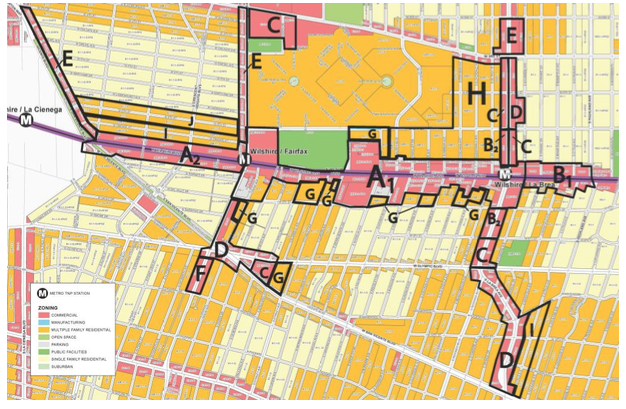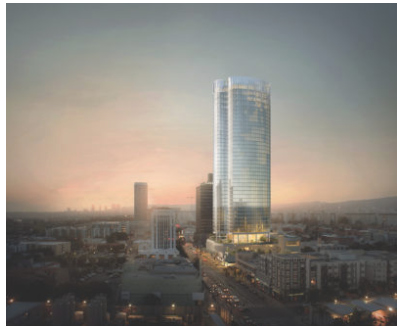CommentsPLANNING WATCH-In Los Angeles City Councilmembers Herb Wesson and Paul Koretz have taken a forceful stand against State Senator Scott Wiener’s nine piecemealed housing bills, especially Senate Bill 1120.
They replace Wiener’s defeated Senate Bill 50, but their impact will be the same: rampant up-zoning of privately owned parcels justified by the specious claim that up-zoning solves California’s house crisis. We just need to “unleash the private sector” by scaling back zoning and environmental laws because they are a drag on developer profits. Then, private real estate investors/speculators will do the rest. Once they can make even money, these scammers will build California out of rent gouging, overcrowding, and homelessness.
To their credit, the Councilmembers explained why the claims spouted by Scott Wiener and his YIMBY California benefactors are sheer nonsense. They also explained how Wiener’s nine new bills make the state’s multiple housing crises worse, not better.
What we now need is for LA’s elected officials to apply their formidable critique of the State Legislature’s housing bills to similar real estate scams in Los Angeles. In particular they need to take on the proposed Purple Line Extension Transit Neighborhood Plan (TNP) since it is in Herb Wesson’s (CD 10) and Paul Koretz’s (CD 5) Council Districts. This proposal, slowly working its way through City Hall’s bureaucracy since 2016, would substantially up-zone hundreds of private parcels in the greater Miracle Mile and Fairfax areas. More specifically, as this map shows, it would up-zone neighborhoods that already have generous and unused zoning capacity: the Wilshire/Miracle Mile, LaBrea, Fairfax, and San Vicente corridors.

Like the housing bills in Sacramento, the proposed Purple Line TNP is a developer-friendly up-zoning scheme that purports to increase transit ridership. But it is based on four totally bogus claims, and it will result in reduced, not increased, transit ridership.
Bogus Claim 1. The Wilshire/Miracle Mile, LaBrea, Fairfax, and San Vicente corridors lack sufficient zoning for the construction of apartment buildings. In fact, these areas have an enormous amount of unused zoning capacity, and Wilshire Boulevard’s existing zoning could allow a second Century City. Furthermore, these residential projects could qualify for LA’s two Density Bonus ordinances, SB 1818 and TOC Guidelines. After granting these bonuses, the City could bump up the projects’ density, size, and height without up-zoning.
Every population forecast for the entire Wilshire Community Plan area could be easily accommodated in the Miracle Mile corridor. Although this residential surge would cause existing storm drains, sanitary sewers, water mains, electricity infrastructure, and emergency services to fail, they would not require up-zoning. They also would not promote the construction of luxury high-rise buildings, such as the proposed 42 story monster at 5411 Wilshire, even though it conflicts with many City Council-adopted Wilshire Community Plan’s policies, including:
Policy 1-1.1 Protect existing stable single family and low-density residential neighborhoods from encroachment by higher density residential uses and other uses that are incompatible as to scale and character, or would otherwise diminish the quality of life.
Policy 1-3.1 Promote architectural compatibility and landscaping for new Multiple Family residential development to protect the character and scale of existing residential neighborhoods.

Proposed luxury high-rise apartment building at 5411 Wilshire.
Bogus Claim 2: If/when up-zoning results in additional transit-adjacent residential construction, the new tenants will suddenly become bus and subway users. This is simply not the case in Los Angeles because upzoning increases land values, and if/when this results in new market housing, the units are always expensive. Only the well-off can afford their high rents, and few of these new tenants use busses and subways for transportation. Instead, they rely on their own cars or Ubers for mobility. This is why METRO subway and bus ridership has sharply declined in areas, like Koreatown and Hollywood, despite the construction of new Transit Oriented Developments.
Bogus Claim 3: Up-zoning will result in a glut of new construction that drives down the price of housing. This is not happening because investors and landlords can afford to maintain empty units without reducing high rents in occupied units. To maintain property values, they only offer prospective tenants small concessions, such as six months of free parking or two months of free rent. Furthermore, in Los Angeles there is a lax enforcement of the short-term rental ordinance. This allows landlords to illegally rent out vacant units to tourists or as party houses.
Furthermore, in cases where City Hall has granted excess Density Bonus height, density, and mass to developers who pledge to include low priced units in their projects, no City employees ever verify the existence of these units or the presence of certified low-income tenants.
Bogus Claim 4: Up-zoning will result in reduced Green House Gas emissions, slowing down or reversing climate change. This is incorrect for five reasons. First, the demolition of existing, lower-priced housing to create in-fill sites for new, expensive, high density apartments eliminates the embedded carbon in older residences. It replaces it with new carbon through construction materials and building operations. Second, the new structures are more energy intensive than existing structures because they have pools, spas, 24/7 air conditioning and heating, and large appliances. Third, the new structures are expensive, which ensures that their buyers and tenants own and drive cars, while rarely taking buses and subways. Fourth, in the case of McMansions that replace older, smaller homes, they locate large driveways and double garages at the front on the house, incentivizing the owning and driving of cars. Fifth, according to a recent USC study, because of their large footprint, McMansions reduce tree cover. As a result, new infill housing reduces the absorption of Green House Gases, especially CO2.
For those who want a deeper dive into the many flaws of the proposed Purple Line Extension Transit Neighborhood Plan, the CityWatch archives are a convenient place to begin.
What is now needed is a proposal for the new Purple Line Extension neighborhoods that addresses transit, neighborhood, and planning, not one whose agenda is handing over windfall profits to investors, developers, and property owners.
How do we do this? The answer is clear.
First, any planning for the communities adjacent to the Purple Line Subway extension needs to be part of the forthcoming update of the Wilshire Community Plan.
Second, the many specific criticisms and suggestions in Councilmember David Ryu’s detailed letter to the Department of City Planning regarding the Purple Line TNP must be adhered to.
Third, any transit plan’s focus should be First-Last mile public improvements, not up-zoning. These should minimally include the following:
- Sidewalk, intersection, and street repairs.
- Bus rapid transit lanes.
- Buffered bicycle and scooter lanes
- Station interfaces for cars, buses, pedestrians, bicycles, and scooter.
- Streetscape and street furniture.
- Bus stop shelters with electronic signage.
- Wayfaring signs.
- Parking facilities.
- Street lighting.
- Street tree preservation and planting.
Fourth, the project’s Draft Environmental Impact Report must consider an environmentally friendly option that is based on public improvements, including those listed above, that promote transit ridership.
(Dick Platkin is a former Los Angeles city planner who reports on local planning issues for CityWatch. He serves on the board of United Neighborhoods for Los Angeles (UN4LA) and is co-chair of the new Greater Fairfax Residents Association (GFRA). Please email comments and corrections to [email protected] or via Twitter to @DickPlatkin.) Prepped for CityWatch by Linda Abrams.














